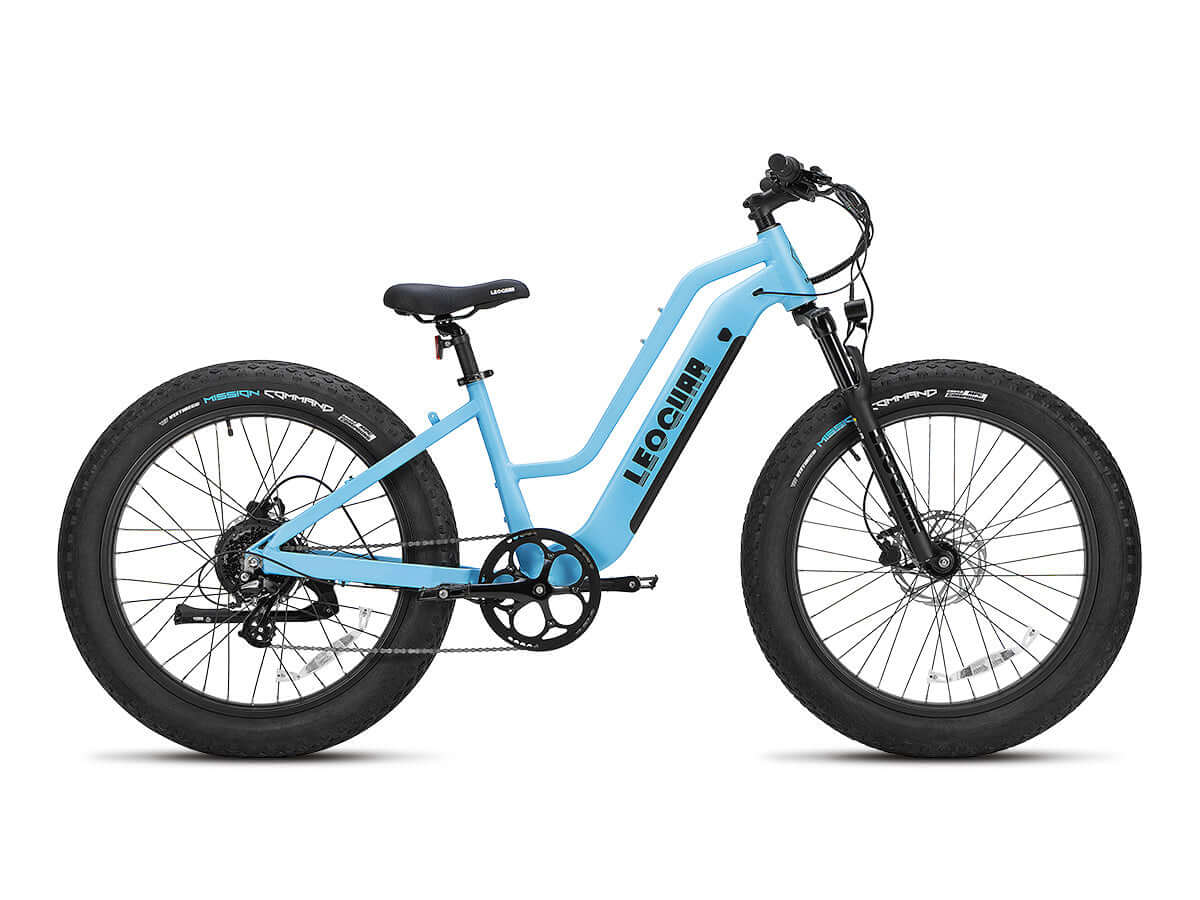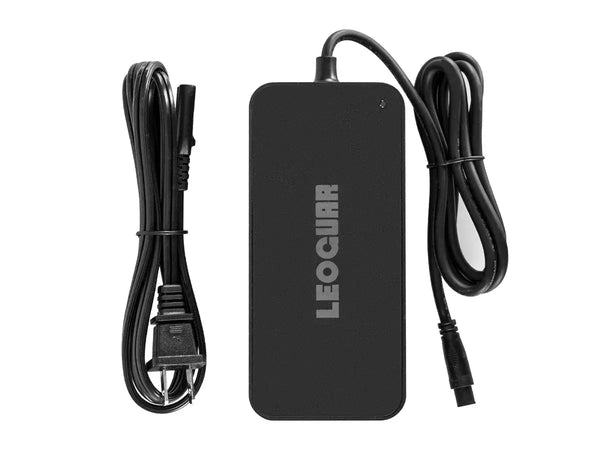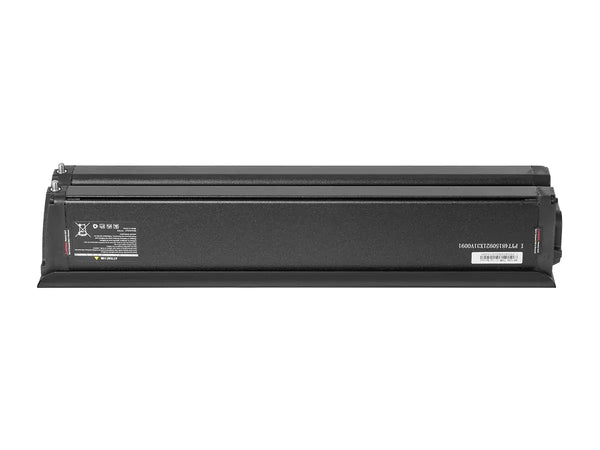
E Bike Charger Cost Guide: How Much Does Charging Really Cost?
The Real Cost to Charge
New e-bike owners often ask, "How much does it cost to charge this thing?" The answer is always a pleasant surprise: it's incredibly affordable. A full charge often costs just a few cents. This low cost is one of the many joys of e-bike ownership.
In this guide, we'll walk you through everything you need to know about your electric bike charger. We'll show you how to calculate your exact charging cost, explain the different types of chargers, reveal how to find power on the go, and share smart strategies to save money and extend your battery's life.
Understanding how much does it cost to charge an e bike is surprisingly simple. It's not a mystery hidden in your utility bill; it's a straightforward calculation that puts you in control. Let's break it down so you can see just how little you're spending per mile.
The Simple Formula
To find your cost per charge, you only need two numbers: your battery's capacity and your local electricity rate. Here's the formula: (Battery Capacity in Wh / 1,000) x Your Local Electricity Rate in kWh = Cost Per Charge
Let's explain the components. The electric bike battery capacity is measured in Watt-hours (Wh) and is almost always printed on the battery's casing or listed in your bike's manual. Your Electricity Rate is found on your monthly utility bill, listed in cents or dollars per kilowatt-hour (kWh).
Key Cost Factors
Two main variables determine your charging cost. Battery Size (Watt-hours) is the measure of your battery's energy storage. A larger battery, like a 750Wh model, will cost more to fill from empty than a smaller 400Wh battery. However, it will also typically give you a longer range, so the cost per mile often remains similar.
Local Electricity Price is the biggest variable. Electricity rates can differ significantly from one state to another, or even by time of day if you're on a time-of-use plan. To find the most current and accurate figures for your area, we recommend checking the latest electricity rates from the U.S. Energy Information Administration.
Real-World Examples
To put this in perspective, let's look at the cost to charge common e-bike batteries in different parts of the U.S., using the national average rate of approximately $0.17/kWh as a baseline.
| Battery Size | Avg. Range | Cost (Low Rate State, e.g., WA @ $0.12/kWh) | Cost (US Avg. @ $0.17/kWh) | Cost (High Rate State, e.g., CA @ $0.30/kWh) | Cost Per Mile (US Avg.) |
|---|---|---|---|---|---|
| 400Wh | 30 miles | $0.05 | $0.07 | $0.12 | ~$0.002 |
| 500Wh | 40 miles | $0.06 | $0.09 | $0.15 | ~$0.002 |
| 750Wh | 55 miles | $0.09 | $0.13 | $0.23 | ~$0.002 |
As you can see, even in the most expensive states, the cost per mile is a tiny fraction of a cent. Compared to the cost of gasoline or public transit, the savings are massive.

Decoding Your Charger
Your e-bike charger is more than just a plug. It's a vital piece of technology that manages the health and safety of your battery. Understanding its features helps you charge safely and make informed decisions if you ever need a replacement.
Standard vs. Fast Chargers
Most e-bikes come with a standard charger, but fast chargers are available as an upgrade. Here's the difference:
Standard chargers typically charge at 2-3 Amps (A). They are slower, taking anywhere from 4 to 8 hours for a full charge. This slower, cooler process is generally better for the long-term health of your battery's cells.
Fast chargers can charge at 4A or more, significantly reducing charging time. They are fantastic for a quick top-up before a ride but generate more heat, which can cause extra stress on the battery over its lifetime. We recommend using them sparingly.
Reading the Specs
Your e-bike charger has important specifications printed on it. Here's what they mean in simple terms:
Volts (V) is like the "pressure" of the electricity. It's the single most important number to get right. Amps (A) is the "flow rate" of the electricity. A higher amp rating means a faster charge. Watts (W) is the total power output (Volts x Amps = Watts).
The golden rule is this: Always match the charger's voltage to your battery's voltage. Using a 52V charger on a 48V battery, for example, is a recipe for disaster and can permanently damage the battery or even cause a fire.
The Importance of Certification
It can be tempting to buy a cheap replacement e-bike charger online, but this is one area where you should never cut corners. Uncertified chargers are a serious safety hazard. We've seen firsthand how a poorly made charger can overheat, melt its casing, and damage an expensive battery.
Always use the charger that came with your bike or a certified replacement from a reputable brand. Look for safety marks like UL, CE, or TÜV. These certifications mean the charger has been independently tested to meet strict safety standards, which is critical for preventing fires, as highlighted by growing awareness around the importance of UL-certified batteries and chargers.
Charging on the Go
One of the greatest freedoms of e-biking is the ability to extend your adventures. But what happens when your battery runs low miles from home? With a little planning and the right etiquette, you can find power almost anywhere.
Finding Public Charging Spots
Think of yourself as an energy scavenger. While dedicated e-bike charging stations are still rare, standard electrical outlets are everywhere. Here are some of the best places to look:
Cafes and restaurants, especially those with outdoor patios, are often happy to let you plug in if you're a paying customer. Public libraries provide a quiet, safe, and free place to charge up while you relax. Bike-friendly workplaces can offer designated spots to charge if you commute. Campgrounds and RV parks are built for power, with electrical posts at campsites that almost always have a standard 120V outlet.
The Etiquette of Asking
Never plug in your e-bike charger without asking first. It's not just polite; it's a matter of safety and respect. We've found that a friendly approach works wonders. Try something like, "Hi, I'm on a long bike ride and my battery is running low. Would you mind if I plugged in my charger here for a while? I'd be happy to buy a coffee and a pastry." Business owners are almost always accommodating when you're a customer.
Using EV Charging Stations
You might see public EV (electric vehicle) charging stations and wonder if you can use them. The answer is yes, but with a crucial piece of equipment. Most EV stations are "Level 2," which use a J1772 connector and output 240V. Your standard e-bike charger uses a "Level 1" NEMA 5-15 plug for a 120V wall outlet. To bridge this gap, you need a J1772 to NEMA 5-15 adapter. This device allows you to plug your regular e-bike charger into a Level 2 EV station.
However, there is a major safety warning: You must confirm your e-bike charger is rated for 240V input before attempting this. This information is printed on the charger's label under "INPUT." If it only says "110V-120V," plugging it into a 240V source will destroy it instantly.
Portable Power Options
For true off-grid freedom, you can bring your own power. Portable power stations are essentially large battery packs with built-in wall outlets. They are perfect for multi-day bike-packing trips or van life but can be heavy and expensive. Solar chargers use a foldable solar panel that can charge your battery, but it's often slow and dependent on direct, bright sunlight. This is a solution for dedicated off-grid adventurers rather than a practical daily option.
Smart Charging Strategies
How you charge your battery doesn't just affect your wallet; it directly impacts your battery's lifespan. A new battery can cost hundreds of dollars, so good charging habits are one of the best ways to protect your investment. These strategies save you money on electricity and delay the cost of battery replacement.
Embrace the 20-80% Rule. Lithium-ion batteries are happiest when they are not fully charged or fully drained. For daily use, try to keep your battery's charge level between 20% and 80%. This simple habit can dramatically increase the number of charge cycles your battery can handle over its lifetime, as confirmed by extensive research on prolonging lithium-based batteries. Only charge to 100% when you know you need the maximum possible range for a long ride.
Charge in a Cool Place. Heat is the number one enemy of battery health. Never leave your battery or e-bike charger in direct sunlight or a hot car. Always charge in a cool, dry, and well-ventilated area. Charging a hot battery (right after a long ride) or in a hot environment accelerates cell degradation.
Unplug When Full. Modern certified chargers are "smart" and automatically stop charging when the battery is full. However, it's still best practice to unplug the charger from the wall and the battery once the indicator light turns green. For those who like to set it and forget it, a simple mechanical outlet timer or a smart plug can automatically cut the power after a set number of hours.
Use the Right Charger. As we mentioned earlier, always use the e-bike charger that came with your bike or a high-quality, certified replacement with the exact same voltage and a compatible connector. An incorrect or low-quality charger can deliver unstable power, leading to cell imbalance and reduced capacity.
Avoid Deep Discharges. Try not to run your battery completely flat on a regular basis. Consistently draining it to 0% puts significant stress on the cells. It's better to top it up more frequently than to run it to empty every time. If you plan to store your e-bike for an extended period (more than a month), charge or discharge the battery to around 40-60% for optimal long-term health.

Ride with Confidence
Charging your e-bike is not only simple but also remarkably inexpensive. For just a few cents, you unlock miles of efficient, fun, and eco-friendly transportation. By understanding how to calculate your costs, using the correct e-bike charger safely, and adopting smart charging habits, you are in full control.
You can now confidently manage your bike's power, whether you're charging at home for your daily commute or finding an outlet on a cross-country adventure. So, plug in, power up, and enjoy the ride.
Frequently Asked Questions
Q: How much electricity does it take to charge an e-bike battery?
A: Most e-bike batteries range from 400Wh to 750Wh. To fully charge a 500Wh battery, you'll use about 0.5 kilowatt-hours of electricity, which typically costs between 6 to 15 cents depending on your local electricity rates.
Q: Can I use any charger with my e-bike battery?
A: No, you must use a charger that matches your battery's voltage exactly. Using the wrong voltage charger can permanently damage your battery or create a fire hazard. Always use the original charger or a certified replacement with identical specifications.
Q: How long does it take to charge an e-bike battery?
A: With a standard charger, most e-bike batteries take 4 to 8 hours to charge completely. Fast chargers can reduce this time to 2 to 4 hours, but they may generate more heat and stress on the battery over time.
Q: Is it bad to leave my e-bike charger plugged in overnight?
A: Modern certified chargers automatically stop charging when the battery is full, so overnight charging is generally safe. However, it's best practice to unplug the charger once charging is complete to maximize battery lifespan and save a small amount of electricity.
Q: Can I charge my e-bike at public EV charging stations?
A: Yes, but you'll need a J1772 to NEMA 5-15 adapter and must verify your charger can handle 240V input. Check your charger's label for voltage specifications before attempting this, as using 240V with a 120V-only charger will destroy it instantly.











































Leave a comment